Related Research Articles

Live Aid was a multi-venue benefit concert held on Saturday 13 July 1985, as well as a music-based fundraising initiative. The original event was organised by Bob Geldof and Midge Ure to raise further funds for relief of the 1983–1985 famine in Ethiopia, a movement that started with the release of the successful charity single "Do They Know It's Christmas?" in December 1984. Billed as the "global jukebox", Live Aid was held simultaneously at Wembley Stadium in London, attended by about 72,000 people, and John F. Kennedy Stadium in Philadelphia, attended by 89,484 people.
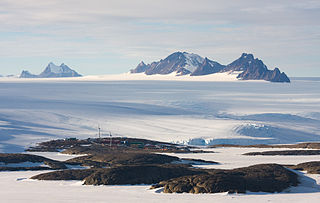
Mawson Station, commonly called Mawson, is one of three permanent bases and research outposts in Antarctica managed by the Australian Antarctic Division (AAD). Mawson lies in Holme Bay in Mac. Robertson Land, East Antarctica in the Australian Antarctic Territory, a territory claimed by Australia. Established in 1954, Mawson is Australia's oldest Antarctic station and the oldest continuously inhabited Antarctic station south of the Antarctic Circle. It houses approximately 20 personnel over winter and up to 53 in summer.
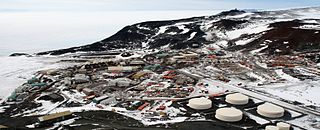
McMurdo Station is an American Antarctic research station on the southern tip of Ross Island, which is in the New Zealand–claimed Ross Dependency on the shore of McMurdo Sound in Antarctica. It is operated by the United States through the United States Antarctic Program (USAP), a branch of the National Science Foundation. The station is the largest community in Antarctica, capable of supporting up to 1,500 residents, and serves as one of three year-round United States Antarctic science facilities. All personnel and cargo going to or coming from Amundsen–Scott South Pole Station first pass through McMurdo. McMurdo Station continues to operate as the hub for American activities on the Antarctic continent. By road, McMurdo is 3 kilometres (1.9 mi) from New Zealand's smaller Scott Base.

The Amundsen–Scott South Pole Station is a United States scientific research station at the South Pole of the Earth. It is the southernmost point under the jurisdiction of the United States. The station is located on the high plateau of Antarctica at 9,301 feet (2,835 m) above sea level. It is administered by the Office of Polar Programs of the National Science Foundation, specifically the United States Antarctic Program (USAP). It is named in honor of Norwegian Roald Amundsen and Briton Robert F. Scott, who led separate teams that raced to become the first to the pole in the early 1900s.

The Antarctic Peninsula, known as O'Higgins Land in Chile and Tierra de San Martín in Argentina, and originally as Graham Land in the United Kingdom and the Palmer Peninsula in the United States, is the northernmost part of mainland Antarctica.

Esperanza Base is a permanent, all-year-round Argentine research station in Hope Bay, Trinity Peninsula. It is one of only two civilian settlements in Antarctica. The base's motto is Permanencia, un acto de sacrificio.

The Rothera Research Station is a British Antarctic Survey (BAS) base on the Antarctic Peninsula, located at Rothera Point, Adelaide Island. Rothera also serves as the capital of the British Antarctic Territory, a British Overseas Territory.

Anvers Island or Antwerp Island or Antwerpen Island or Isla Amberes is a high, mountainous island 61 km long, the largest in the Palmer Archipelago of Antarctica. It was discovered by John Biscoe in 1832 and named in 1898 by the Belgian Antarctic Expedition under Adrien de Gerlache after the province of Antwerp in Belgium. It lies south-west of Brabant Island at the south-western end of the group. The south-western coastline of the island forms part of the Southwest Anvers Island and Palmer Basin Antarctic Specially Managed Area. Cormorant Island, an Important Bird Area, lies 1 km off the south coast.

"Bleed It Out" is a song by American rock band Linkin Park. The song was released as the second single from their third studio album, Minutes to Midnight. The single was released on August 17, 2007.

Concert for Diana was a benefit concert held at the then newly built Wembley Stadium in London, United Kingdom in honour of Diana, Princess of Wales, on 1 July 2007, which would have been her 46th birthday. 31 August that year brought the 10th anniversary of her death. The concert was hosted by Diana's sons, Prince William and Prince Harry, who helped to organise many of the world's most famous entertainers and singers to perform. Proceeds from the concert went to Diana's charities, as well as to charities of which William and Harry are patrons.
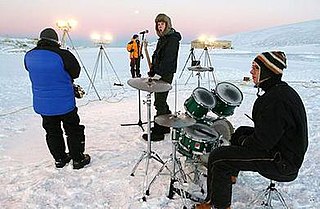
Nunatak was the British Antarctic Survey’s (BAS) Rothera Research Station’s house band. The five person indie rock band was part of a science team investigating climate change and evolutionary biology on the Antarctic Peninsula. They are chiefly known for their participation in Live Earth in 2007, where they were the only band to play in the event's Antarctica concert.
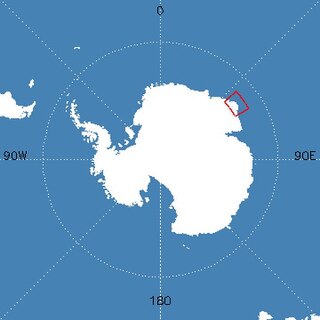
Mount Elkins, also known as Jökelen is a dark, steep-sided mountain with three major peaks, the highest 2,300 meters (7,500 ft) above sea level, in the Napier Mountains of Enderby Land. Enderby Land is part of East Antarctica and is claimed by Australia as part of the Australian Antarctic Territory. The mountain was named after Terence James Elkins, an ionospheric physicist with the Australian National Antarctic Research Expeditions at Mawson Station in 1960.
Telecommunications in Antarctica is provided by the organizations that have established research stations on the continent. Antarctica is not formally designated by the International Telecommunication Union (ITU) in any of the world zones.

Matienzo Base is an Argentine Antarctic base and scientific research station named after Lieutenant Benjamín Matienzo, an Argentine aviation pioneer. It is located in Larsen Nunatak, one of the Foca Nunataks, in Graham Land, Antarctic Peninsula.
The Ceres Nunataks are a group of three nunataks located immediately east of the base of Shostakovich Peninsula in southern Alexander Island, Antarctica. They were mapped by the Directorate of Overseas Surveys from satellite imagery supplied by the U.S. National Aeronautics and Space Administration in cooperation with the U.S. Geological Survey, and named by the UK Antarctic Place-Names Committee after Ceres, one of the asteroids lying between the orbits of the planets Mars and Jupiter.
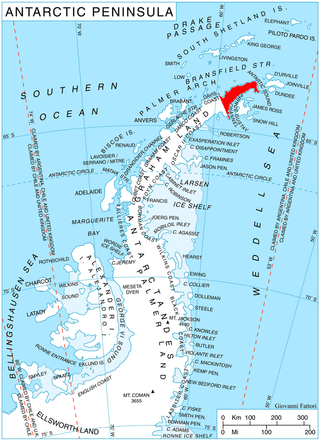
Dreatin Glacier is the 12 km long and 7.5 km wide glacier on the northeast side of Detroit Plateau on Trinity Peninsula in Graham Land, Antarctica. It lies southwest of Znepole Ice Piedmont and north of Aitkenhead Glacier, draining the area southwest of Mount Bradley and north of Tufft Nunatak, and flowing southeastwards into Prince Gustav Channel, Weddell Sea west of Marmais Point.

Hitar Petar Nunatak is the rocky hill rising to 434 m on the coast of Prince Gustav Channel, facing Alectoria Island and next south of the terminus of Aitkenhead Glacier on Trinity Peninsula in Graham Land, Antarctica.
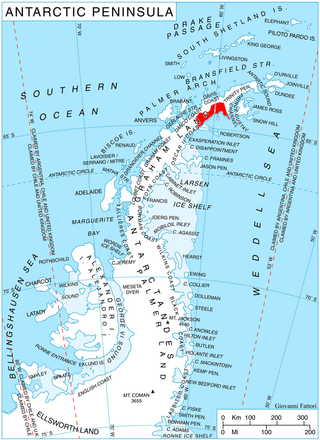
Mikov Nunatak is the rocky ridge 1.35 km long in northwest–southeast direction and 590 m wide, rising to 750 m in the upper course of Zaychar Glacier and linked on the northwest to Detroit Plateau on Nordenskjöld Coast in Graham Land, Antarctica.
Freeze 'Em All was a concert by American heavy metal band Metallica that was played on Antarctica in 2013. The concert took place near the heliport of Argentine Antarctica Base Carlini for an audience of 120 people. With Freeze 'Em All, Metallica became the only band to have performed on all seven continents. Fall Out Boy attempted to play the frozen continent in 2008, but had to cancel due to inclement weather. The concert's name is a reference to the band's debut album and associated tour, Kill 'Em All.
References
- ↑ - Watch The Performances On YouTube from British Antarctic Survey's YouTube Channel